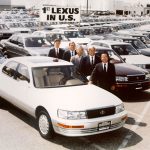High-performance cars have always captivated true car enthusiasts. As a leading figure in the automotive industry, BMW has taken on the responsibility of fueling and igniting that passion. Let’s take a look at the remarkable 40-year journey of BMW M GmbH.
Part II: A shining star in the world of sports cars
After initial successes, Motorsport GmbH underwent a remarkable transformation, becoming a shining star in the realm of racing cars.
Sensational news in the sports car world in 1978: BMW M1
The next project was creating Motorsport GmbH’s first competitive car not based on a conventional production model: the BMW M1. Under the guidance of Jochen Neerpasch, the executive director of Motorsport GmbH, in collaboration with Bernie Ecclestone and Max Mosley, the ProCar Series was established as an opening race, leading to most of the F1 Grand Prix races in Europe during the 1979/80 season.
To comply with the minimum production requirement for FIA Group 4 recognition, 400 cars had to be produced. In addition to being a race car, the M1 was also introduced as a regular road model. Its ultra-low engine placement at a height of 1.4 meters captivated car enthusiasts. The M1, with 277 horsepower, hit the market in 1978 with an exact price of 100,000 German Marks. However, demand far exceeded supply. After completing 130 cars within the first year, there were still over 300 waiting orders to be fulfilled. From the very beginning, the M1 held the title of the fastest road-going sports car produced in Germany. In a 1979 test, it was timed by a leading car magazine, reaching a top speed of 264.7 km/h.
The ProCar race version, equipped with a 470 horsepower engine, achieved a top speed of over 300 km/h. It was one of the cars driven by Niki Lauda, who won the F1 championship twice, claiming victory in 3 out of 8 ProCar M1 races and finishing second on another occasion.
Based on the regular 5 series, Motorsport GmbH’s development engineers created the M535i in 1980. Equipped with a two-valve, 6-cylinder engine “borrowed” from the 635CSi, the M535i quickly became the speed king on racetracks.
1980 F1: BMW creates a world champion engine.
In 1980, Jochen Neerpasch left Motorsport GmbH, and Dieter Stappert took over as team manager. The successor, Paul Rosche, who had been responsible for BMW racing engines since 1969, became the technical director. It was under his leadership that BMW entered the highest class of sports cars – F1. He gave the green light to the engineers at Motorsport GmbH to develop BMW’s first powerful F1 car.
Using a 4-cylinder engine with a displacement of only 1.5 liters, the engineering team, led by the legendary engine wizard Paul Rosche, built a power plant that generated an astonishing 800 horsepower. This turbocharged engine boasted a combination of 16-valve technology and the first-ever application of a turbocharger in F1, controlled by the DME (Digital Motor Electronics) processor.
Right from the start, this turbocharged engine showcased its superiority on the racetrack, achieving its most significant victory in 1983. Just 630 days after BMW’s F1 engine made its debut, Brazilian driver Nelson Piquet clinched the world championship with a BMW Brabham. By 1987, BMW had secured 9 Grand Prix victories with this formidable engine.
BMW M turbo engines attracted not only the Brabham team but also Arrows, ATS, Ligier, and Gerhard Berger. In 1989, Road&Track – a prominent American car magazine – demonstrated the engine’s exceptional efficiency, boasting 900 horsepower. It could go from 0 to 160 km/h in just 4.8 seconds. Paul Rosche believed that this 4-cylinder engine had the potential to develop even more power, stating, “It had to achieve around 1400 horsepower, but we don’t know the exact figure because the engine’s dynamometer only went up to 1280 horsepower.”
Another important event in 1983 was the transformation of BMW Motorsport GmbH into a performance-oriented development company. As a result, separate development centers for engines and suspension systems were established to provide input for these activities. In terms of customer relationships, Motorsport GmbH offered a wide range of state-of-the-art car service packages for an extended period. Accessory and optional equipment sales accounted for a significant portion of their overall sales.
BMW M1 6-cylinder engine
In 1984, Motorsport GmbH solidified its status as an esteemed name, particularly among performance-oriented sports car enthusiasts. The first-ever 4-valve 6-cylinder inline engine was introduced in the M1. It then made its way into the M635CSi Coupé and M5. The hand-built M5 at Preussenstrasse quickly became a legend in the world of sports cars.
Dubbed the “wolf in sheep’s clothing,” the M5 surpassed the engine power of the 518i nearly threefold, boasting 286 horsepower. At first glance, the M5 appeared similar to other models in the series. However, its top speed of 245 km/h surprised many drivers.
1986: The emergence of the M3
After concluding its activities in F1, Motorsport GmbH redirected its energy toward touring car racing. This ultimately led to the birth of the BMW M3 in 1986. The compact two-door sports car represented BMW’s first parallel development for both volume production and sports cars. The project aimed to produce 5,000 cars within one year to be recognized as touring cars, adhering to almost all regulations in Group A. In 1986, Motorsport GmbH relocated to its second home in Garching, on the outskirts of Munich.
The result was an extraordinary success for BMW on all fronts. Right from the start, the bright white car in BMW Motorsport livery clinched the world championship at the World Touring Car Championship in 1987, with Italian driver Roberto Ravaglia behind the wheel.
The 4-valve, 6-cylinder engine delivered a maximum output of 195 horsepower, featuring the standard triggertooth system. This high-performance car set the benchmark at the time.
In the following five years, the M3 continued its dominance. It secured two Touring Car Championships, twice emerging victorious in the German Touring Car Championship DTM, and winning numerous awards at other international events. The M3 became the most successful touring car of its time.
The M3 also proved to be popular among customers, achieving unprecedented sales figures. The first M3 series saw 17,970 units sold, including 600 M3 Sport Evolution 2.0l models and 765 hand-built M3 convertibles. The M3 highlighted that sports activities and environmental protection were not mutually exclusive. It offered excellent fuel efficiency standards in relation to its power and performance.
2nd generation M5
In 1988, the M5 ushered in its second generation. Its originally 6-cylinder inline engine, with a displacement of 3.6 liters, was upgraded to 3.8 liters, boasting an increased output from 315 horsepower to 340 horsepower. The M5 stood as an exceptional blend of a purebred sports car and an elegant transportation vehicle.
When the next-generation 3 Series was slated for launch in 1990, Motorsport GmbH was already busy working on the new BMW M3. This car made its debut in 1992, featuring a 3.0-liter 6-cylinder, 4-valve engine with a maximum output of 286 horsepower. The 6-cylinder M3 also became the first BMW engine to incorporate variable camshaft timing – VANOS. This infinitely variable camshaft adjustment system delivered dynamic and sophisticated engine characteristics.
Another unique feature of this car was the introduction of engine management, developed by BMW. With a control capacity of 20 million instructions per second, it marked a significant technological advancement.
Car of the century – 2nd generation BMW M3
The M3 instantly captured the hearts of customers and the media. The waiting list filled up immediately, and the accolades and awards followed suit. Readers of German sports car magazines and BMW motorbike magazines consecutively voted the BMW 3 Series as the “Car of the Year.” Auto Plus magazine in France even chose the M3 as the “Car of the Century” after comparing it with luxury market models. Furthermore, the editors of Automobile Magazine honored the M3 with the “Car of the Year” award immediately after its launch in the US market. It was the first time in the history of the award that it went to an imported car.
From 1992 to 1996, Motorsport GmbH built over 85 4-door 3 Series race cars based on the M3 model. With Johnny Cecotto behind the wheel, BMW emerged victorious in the ADAC GT Championship in 1993 and set its sights on conquering the US sports car market. Consequently, it came as no surprise when the M3 400-horsepower PTG won the IMSA championship in 1996.
Forward-thinking customers had the opportunity to own a personalized M3 of their own. BMW Individual, established by Motorsport GmbH in 1992, fulfilled even the most individual desires, surpassing the “normal” options packages. With the establishment of BMW Individual, Motorsport GmbH once again proved to be a market pioneer, introducing personal styling to the automotive world.
With the new business model and rapid expansion, the company needed a new name to encompass its entire range of activities. As of August 1, 1993, Motorsport GmbH was renamed BMW M GmbH.
In 1995, the best-selling BMW M3 gained even more power, boasting 321 horsepower from a 3.2-liter displacement. It set a new standard for competitors, combining power with torque. The M3 also adopted a pair of VANOS systems for the first time, along with continuous variable adjustment of the intake and exhaust camshafts. Another notable inclusion was the standard 6-speed manual gearbox for transmitting power to the rear wheels.
>> Part III: The BMW M GmbH empire
Ng?c Ði?p (TTTÐ)



























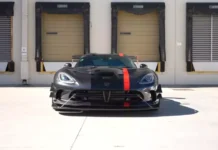



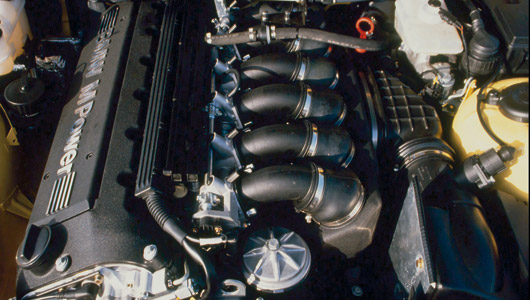
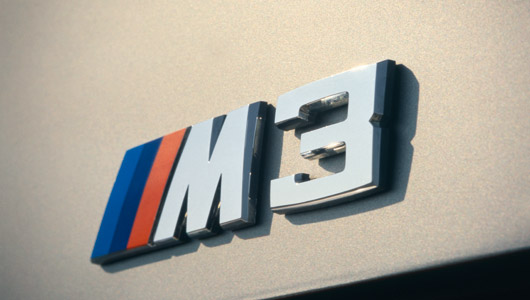
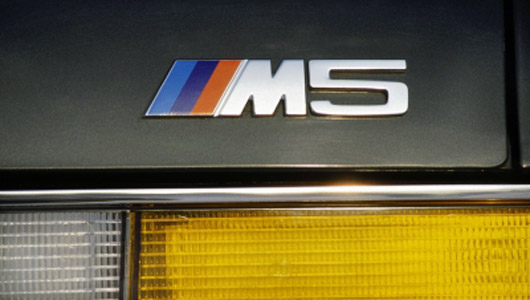
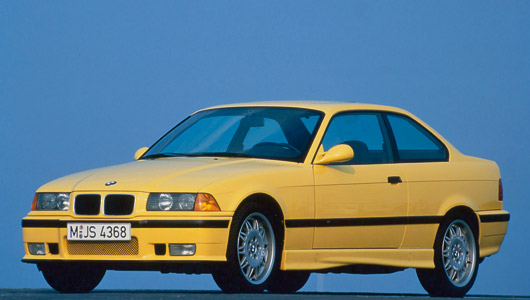


![[CAR REVIEW] The Newly Launched BMW iX3 in Vietnam: Compact, Practical, and Expensive](https://vnauto.net/wp-content/uploads/2023/10/xehay-bmwix3-01082023-9-150x150.jpg)

